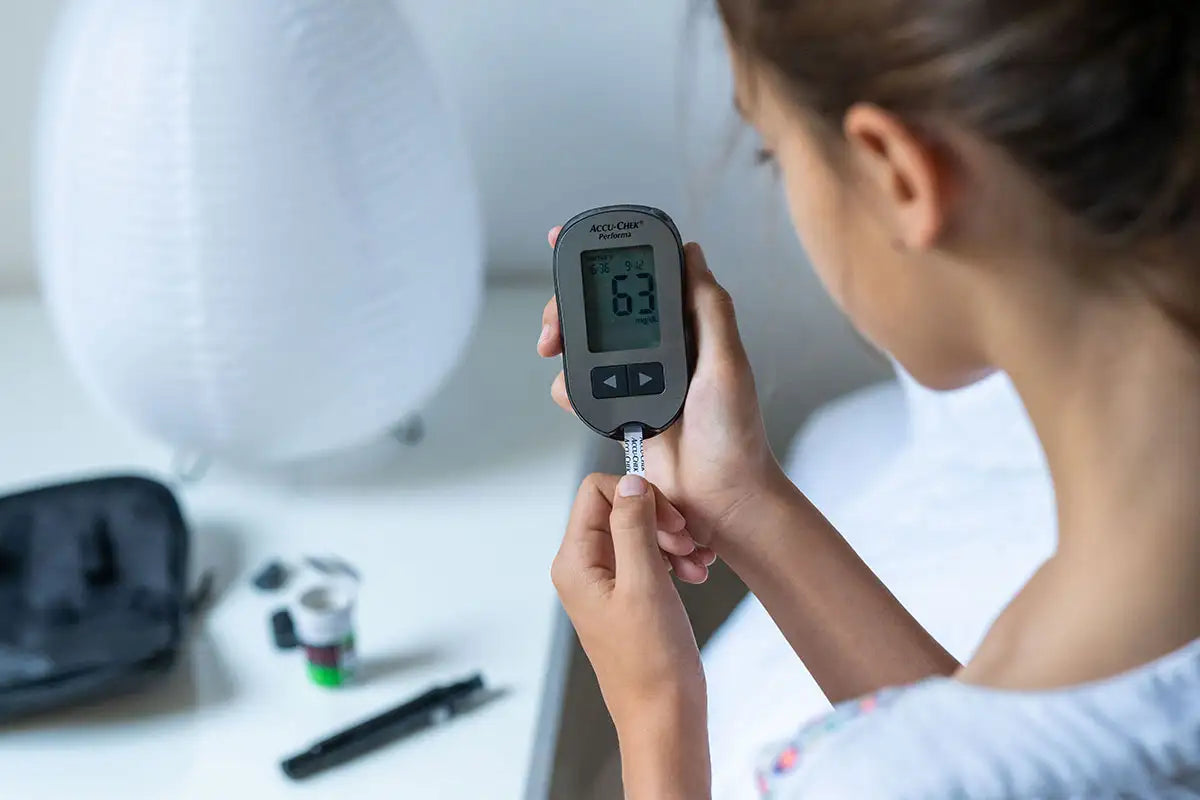
Type 1 Diabetes Mellitus (T1DM) is such a huge area, that I wanted to write a blog about it, but break it down into chunks for people to understand. You couldn't possibly cover Type 1 diabetes in 1 session, as people would be overwhelmed. So in this blog, I'm just discussing what T1DM is, how it is diagnosed/detected, and complications.
Over the next few weeks, I'll look at more specifics - like how it is treated, how to use flash glucose monitors, and support groups.
So lets start with the basics, and I'll use videos and pictures where possible-
What is T1DM?
Type 1 diabetes causes the level of glucose (sugar) in your blood to become too high.
It happens when your body cannot produce enough of a hormone called insulin, which controls blood glucose.
You need to take insulin every day to keep your blood glucose levels under control. You need to count carbohydrates and monitor your food to know how much insulin to administer.
Type 1 diabetes is not linked with age or being overweight – these things are linked with type 2 diabetes. Most people with T1DM will be diagnosed before the age of 30. The average age of diagnosis is 13 years. There are approximately 10,000 people in NI living with T1DM.
This video from Diabetes UK explains T1DM and signs and symptoms really well
Causes of Diabetes
We really aren't sure what causes diabetes but here's what we do know through research and scientists are continuing to do research on this area. Whatever the cause, T1DM usually comes on very quickly and can be rapidly fatal if not treated.
Genetics
The genetics of Type 1 diabetes isn’t simple. There’s no single gene that, if inherited from your parents, means you’re going to develop Type 1 diabetes.
In fact, there are a number of genes involved in Type 1 diabetes. These genes don’t ‘give’ you Type 1 diabetes, but increase the chances of you developing it. The more high risk genes you have, the more likely you are to develop Type 1 diabetes.
But having several high risk genes doesn’t mean you will definitely develop Type 1. Take genetically identical twins as an example. There are pairs of identical twins where one twin develops Type 1 diabetes, and the other doesn’t. This means that our risk of Type 1 diabetes isn’t solely linked to our genetic make-up.
The number of people being diagnosed with Type 1 diabetes is on the rise. And this number is rising too quickly for Type 1 diabetes to be down to genes alone – our genes can’t change that quickly. Something else is contributing to this increase in Type 1 diabetes.
Scientists believe that our environment plays a role in the development of Type 1 diabetes, in combination with these high risk genes. (1)
Viral infection

Several viruses have been associated with Type 1 diabetes, but one type of virus, called Human Enteroviruses (HEVs), have the strongest body of evidence. HEVs are a large family of viruses that enter the gut and are spread through poor hygiene or sanitation. One of the most famous HEVs is the polio virus, but most HEVs aren’t as serious as polio and can appear as a common flu-like infection that the immune system will clear on its own. (1)
Gut microbiome
The ‘microbiome’ describes all of the different bacteria and other microorganisms living inside us. Most of these are found in our gut. They can influence our health in different ways, including how our immune system works and how we break down sugar.
There are a number of factors that could affect the gut microbiome, such as whether a baby is born via caesarean delivery, our diets during early childhood and the use of antibiotics. All of these are intertwined with how the gut microbiome develops and how diverse it is, which appears to be important in the development of Type 1 diabetes.
Studies have shown that the gut microbiome in children with Type 1 diabetes is different compared to children without Type 1. There is even evidence to suggest that there are fewer types of bacteria in children who show early signs of Type 1 diabetes but haven’t been diagnosed yet. (1)
Difference between Type 1 and Type 2 Diabetes

But where type 1 and type 2 diabetes are different in symptom is how they appear. Type 1 can often appear quite quickly and there are four common ones, which we call the 4Ts of type 1 diabetes. That makes them harder to ignore. This is important because symptoms that are ignored can lead to diabetic ketoacidosis (DKA).
4T's of type 1 diabetes
If you are showing the 4 T symptoms of diabetes, your GP will do a urine test and blood glucose (sugar) level.
-you are constantly thirsty
-you have lost alot of weight without dieting (thinner)
-you are going to the toilet frequently/or bed wetting
-you are tired alot/feeling sick/missing school days.
If they think you might have diabetes, they'll advise you to go to hospital straight away for an assessment.
You'll stay in hospital until you get the blood test results. This is usually the same day. Treatment will be started straight away.

But type 2 diabetes can be easier to miss. This is because it develops more slowly, especially in the early stages. That makes it harder to spot the symptoms. That is why it is important to know your risk of developing type 2 diabetes. Some people have diabetes and don’t know it. They can have it for up to 10 years without knowing.
Complications of diabetes
There are a number of issues that result from type 1 diabetes. Obviously initially, the lack of insulin and rising blood sugar levels, if left untreated, would be fatal. Prior to the discovery of insulin 100 years ago, people with diabetes died quite rapidly after onset of diabetes. Nowadays, insulin is literally a life saver, but diabetic patients are at risk of other complications -
Problems will not start immediately, but constant high blood glucose levels can lead to:
- heart disease and stroke
- foot and circulation problems
- sight problems and blindness
- pain and loss of feeling (nerve damage)
- kidney problems
- gum disease (2)
Diabetic will always have to monitor their food intake and monitor their carbohydrates, and this will influence how much insulin you administer. Miscalculating this, or during illness, T11DM patients are also at risk of low blood sugar levels. This is called a 'hypo'
When you are diagnosed with type 1 diabetes in Northern Ireland, you will be assigned an endocrine consultant and a diabetic nurse specialist usually within a hospital setting. You will see them periodically depending on how your are coping.
You will also see the diabetic nurse/pharmacist or person with specialist diabetic interest in your GP surgery. Again, how often you see them, will depend on your diabetes control. Most people will have a check up with a health professional once every 6-12 months.
Initially after diagnosis you will also be sent on a DAFNE course, to help you count your carbohydrate intake and know how much insulin to administer.
At your appointments with your diabetic nurse specialist or GP surgery check the following will be checked
Getting your heart checked
You should have your blood cholesterol (fats) and blood pressure checked at least once a year.
If you smoke, you should stop. Diabetes makes the effects of smoking on your heart worse. (2)
Melvin Pharmacy run a 12 week smoking cessation course that can help you quit - see attached video
Loss of feeling
Diabetes can damage your nerves (neuropathy), causing:
- numbness
- pain or tingling
- problems with sex
- constipation or diarrhoea
Let your GP or diabetes nurse know if you notice any changes like these. Early treatment can prevent nerve damage getting worse. (2)
Looking after your feet
Diabetes can reduce the blood supply to your feet and cause a loss of feeling.
This means foot injuries do not heal well and you may not notice if your foot is sore or injured. This can lead to ulcers and infections.
Simple things are important, like:
- keeping your feet clean and dry to avoid infection
- trying not to go barefoot outside to avoid cuts and grazes
- wearing shoes that fit well
Check your feet every day and speak to your GP or diabetes nurse if you notice any changes like:
- cuts, cracks or blisters
- pain or tingling
- numb feet
Diabetes UK has advice on how to check your feet.
Your feet should also be checked every year by your diabetes nurse or a foot specialist. (2)
Checking your eyes
Diabetes can damage the blood vessels in your eyes, which can cause sight problems (diabetic retinopathy) and blindness.
Your eyes should be checked every year. It's called diabetic eye screening. This is different from an eye test that checks your eyesight.
Eye screening finds damage before it affects your sight. Diabetic eye disease can be treated and prevented, so it's important to go to eye screening appointments.
Speak to your GP immediately if you notice changes to your sight, including:
- blurred vision, especially at night
- shapes floating in your vision (floaters)
- sensitivity to light (2)
Checking your gums and mouth
Extra glucose in your blood can increase your chance of gum disease and infections.
It's important to keep your mouth healthy by:
- brushing your teeth twice a day or keeping your dentures clean
- visiting a dentist regularly
- not smoking – smoking weakens your immune system, making it harder for you to fight a gum infection (2)
I think that is probably enough for now, but we will look at counting carbs, monitoring blood glucose levels, administering insulin and type 1 diabetes in children in further blogs. I will also give you more information on groups and organisations available to help people with T1DM
References
(1) https://www.diabetes.org.uk/diabetes-the-basics/types-of-diabetes/type-1






